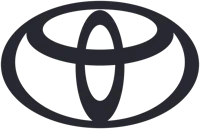DOME_LIVE 018 – LIGETI 100.101
Electronic/Sound Art
Szervezés:
DOME_LIVE 018 – LIGETI 100.101
On the occasion of the centenary of György Ligeti's birth, the House of Music Hungary launches a series of educational and lecture programmes in cooperation with the music academies of Berlin, Vienna and Budapest, as well as Collegium Hungaricums. The nine artists participating in the program will write a new electroacoustic work by studying György Ligeti's compositional methods and applying them, which will be presented at key venues in the three cities. "At that time I believed that it was up to us composers to make all our ideas come true in the studio. This belief was gradually diminished by experience. It turned out that although in principle all kinds of music, sounds, complex chords can be composed from sine tones, but a kind of time factor intervenes. (…) For if I hear what I imagine only in a year, it is almost certain that the ideas themselves have changed decisively in the meantime." (Peter Várnai: Conversation with György Ligeti)
György Ligeti did not continue his research in electronic music except for three pieces he produced at WDR studio between 1956 and 1958. What he wanted to achieve with electronics in good quality at that time would have been too complex and labor-intensive with contemporary equipment. At the same time, during the practical work processes during this period, he became more interested in how to express his innovative musical ideas with acoustic instruments. His complex, challenging music is sometimes based on surprisingly 'down-to-earth' compositional techniques, which can be illustrated with examples from everyday life, graphic diagrams, various instructions, and are suitable for transcription into various digital forms. The metaphors he uses, rich in spatiality, imagery and meaning, serve as further clues for understanding his compositional methods and exploring his multidimensional interpretations.
The Ligeti 100.101 project invites participants to research the composer's oeuvre through a creative process, where a deep understanding of his methods, thoughts and metaphors provides inspiration for the creation of new pieces performed by an ensemble of electronic musicians. Returning to technology and working with Ligeti's ideas using computers, analogue/digital synthesizers, and algorithmic processes more than five decades after he abandoned electronic devices is an attempt to imagine what would happen if composers had access to faster and better technology. On the other hand, it is also an experiment to see how far 21st century technological/musical tools can extend his ideas.
The project involves 2 students (and/or alumni) together with their mentors from each three universities (UdK-Berlin, Mdw-Vienna, LFZE-Budapest). Participants meet online and in person to share knowledge and ideas about Ligeti's compositional techniques, the workflows of the creative process and the performative relationships of the pieces to be composed and realized during the project. As a closing event presenting the results of the program, three concerts – one per city – will take place between October 2023 and February 2024. Partners: House of Music Hungary, Liszt Academy, Universität der Künste Berlin (Sound Studies and Sonic Arts), Collegium Hungaricum Berlin, Universität für Musik und darstellende Kunst Wien, Collegium Hungaricum Wien, possible partner Wien Modern Festival, Collegium Hungaricum Wien, Collegium Hungaricum Berlin
Dates:
Vienna: November 25, 2023
Budapest: December 5, 2023
Berlin: January 31, 2024


